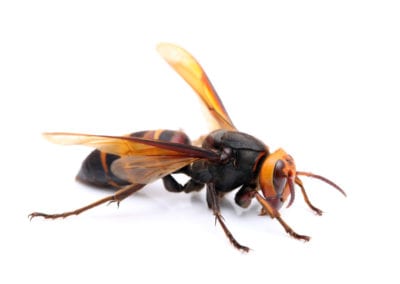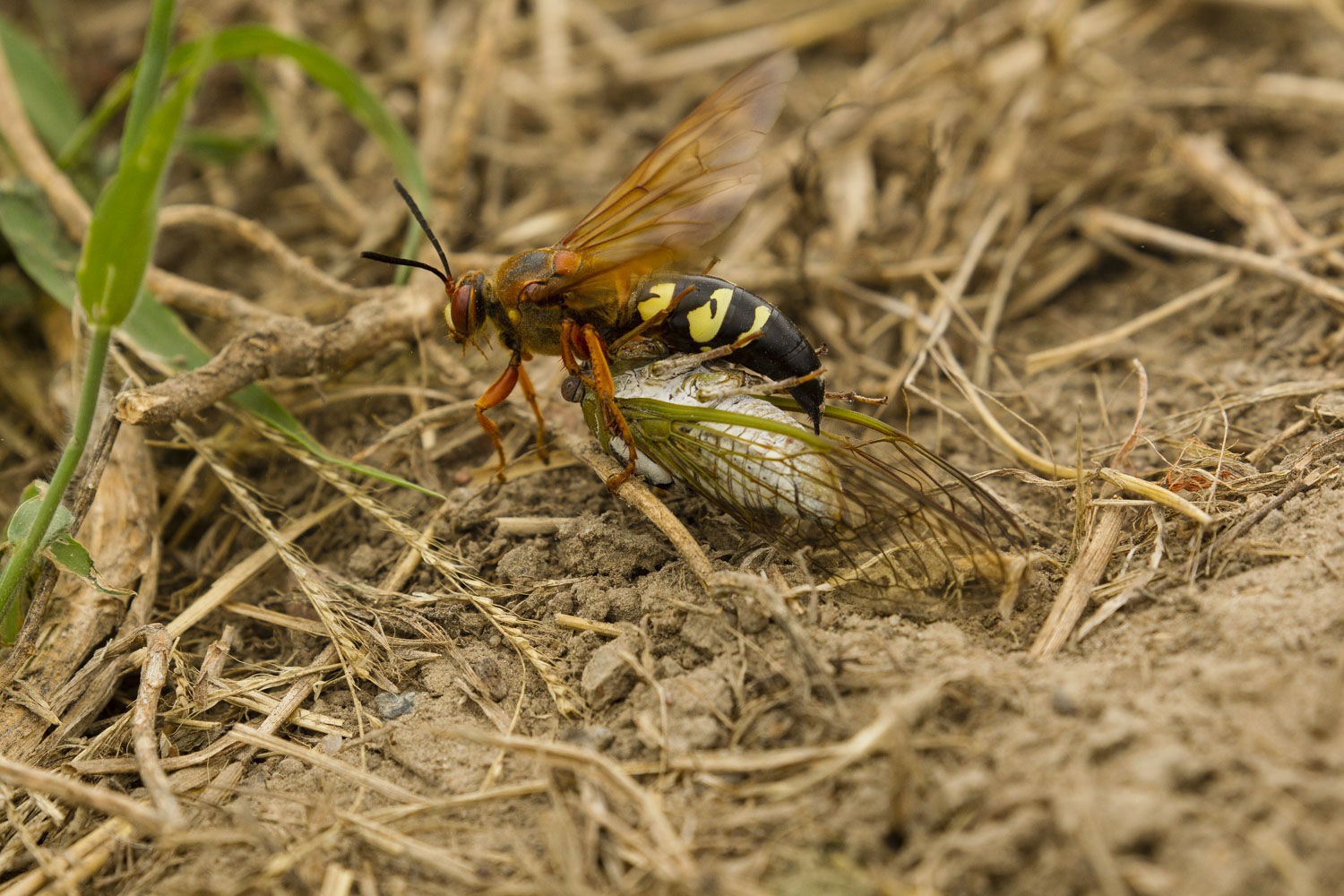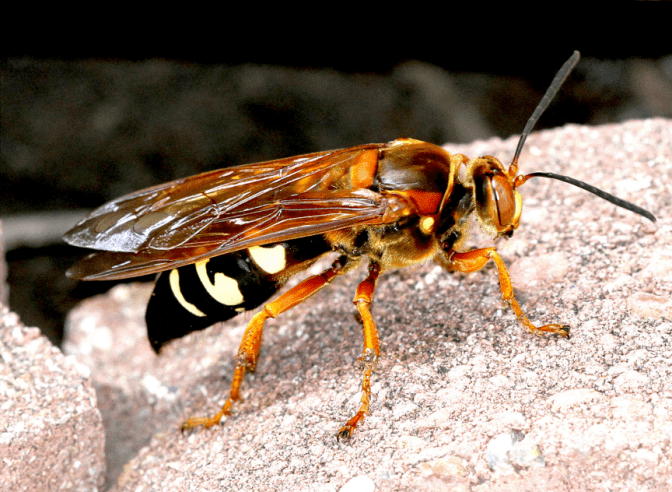
Life history, habits, and control of the cicada killer wasp in West Virginia.The Ohio Journal of Science, 43: 32 - 41. Life history and habits of the cicada killer in Ohio.Annals of the Entomological Society of America 99: 793 - 798. Improved key to new world species of Sphecius (Hymenoptera: Crabronidae).Entomology & Nematology, FDACS/DPI, EDIS. Common name: cicada killer, giant ground hornet, scientific name: Sphecius speciosus (Drury) (Insecta: Hymenoptera: Sphecidae).

2018 Pest Control for Professional Turfgrass Managers.

During the fall, larvae spin a silken cocoon for overwintering.
#Cicada killer wasp skin
Larvae feed for up to two weeks, until only the cicada’s outer skin remains. After two to three days, eggs hatch and the larvae feed on the paralyzed cicada provided. If the cells in the primary tunnel are full, she will construct secondary tunnels and fill with additional cells and larvae before being sealed off. She will lay one egg on her prey and place both in each cell of the burrow. Once caught, the female will sting the cicada, paralyzing it and drag it back to the burrow ( Figure 3).

Once cells have been constructed, females leave to hunt cicadas by sight, often capturing them in flight. At the end of each burrow, an individual female will create three to four cells in which she will later place her eggs. Soil particles are kicked back with the hind legs which form a U-shaped mound at the entrance. Males die soon after mating but females will remain active for approximately two months during which time they will dig a burrow in full sun in well-drained, light-textured soil. Cicada killer wasps emerge in mid-late summer.


 0 kommentar(er)
0 kommentar(er)
